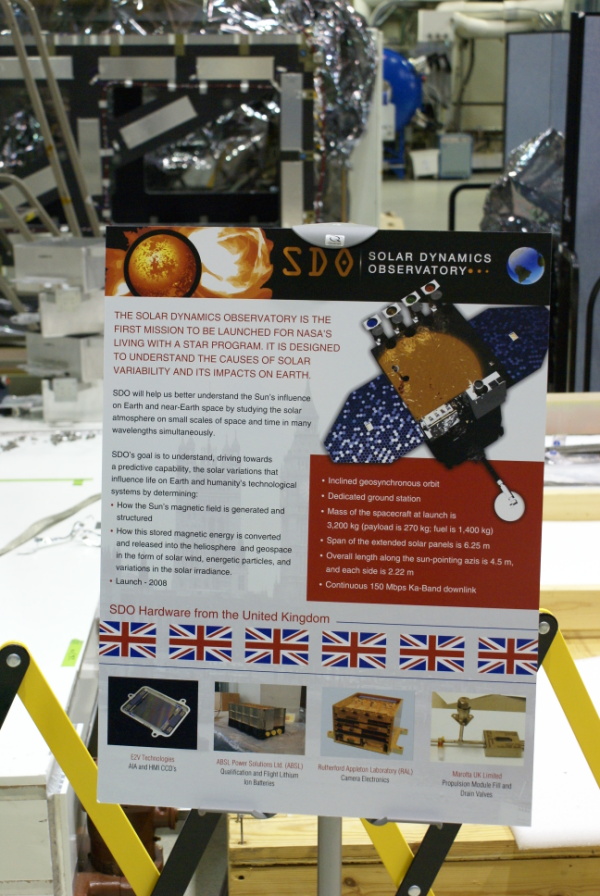| Prev |
heroicrelics.org Goddard Space Flight Center Site Index Solar Dynamics Observatory Gallery |
Next |
dsc35741.jpg
One of the signs explaining the Solar Dynamics Observatory. It reads
SDO: Solar Dynamics Observatory
The Solar Dynamics Observatory, the first mission to be launched for NASA's Living with a Star program, is designed to understand the causes of solar variability and its impacts on earth.
SDO will help us better understand the sun's influence on earth and near-earth space by studying the solar atmosphere on small scales of space and time in many wavelengths simultaneously.
SDO's goal it to understand, driving towards a predictive capability, the solar variations that influence life on Earth and humanity's technological systems by determining:
- How the Sun's magnetic field is generated and structured
- How this stored magnetic energy is converted and released into the heliosphere and geospace in the form of solar wind, energetic particles, and variations in the solar irradiance.
- Launch - 2008 [heroicrelics: it was actually launched February 11, 2010]
- Inclined geosynchronous orbit
- Dedicated ground station
- Mass of the spacecraft at launch is 3,200 kg (payload is 270 kg; fuel is 1,400 kg)
- Span of the extended solar panels is 6.25 m
- Overall length along the sun-pointing axis is 4.5 m, and each side is 2.22 m
- Continuous 150 Mbps Ka-Band downlink
SDO Hardware from the United Kingdom
- E2V Technologies: AIA and HMI CCDs
- ABSL Power Solutions Ltd. (ABSL): Qualification and Flight Lithium Ion Batteries
- Rutherford Appleton Laboratory (RAL): Camera Electronics
- Marotta UK Limited: Propulsion Module Fill and Drain Valves
In the upper left of the picture is the telescope mount flight article in early stages of construction.

| Time picture taken | Wed Jun 27 14:58:16 2007 |
| Location picture taken | Various Working Areas Goddard Space Flight Center Greenbelt, MD |
| Prev | Solar Dynamics Observatory Gallery | Next |